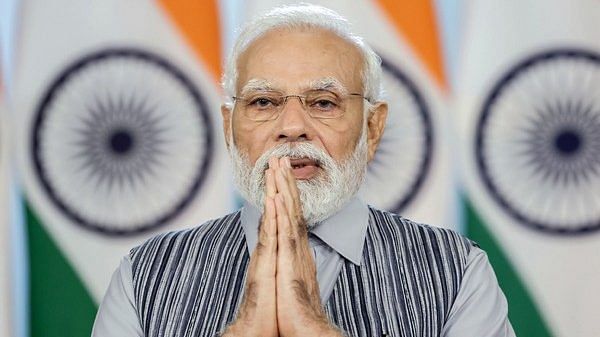New Delhi: Prime Minister Narendra Modi has congratulated scientists at the Indian Space Research Organisation for the successful launch Saturday of the country’s maiden solar mission.
Modi posted on X: “After the success of Chandrayaan-3, India continues its space journey. Congratulations to our scientists and engineers at @isro for the successful launch of India’s first Solar Mission, Aditya -L1.”
He said the country’s “tireless scientific efforts” would continue in order to “develop better understanding of the Universe for the welfare of entire humanity”.
India’s first solar observatory mission Aditya-L1 blasted off at 11.50 hours from spaceport Sriharikota in Andhra Pradesh on Saturday for a detailed study of the Sun’s outer atmosphere.
The satellite was placed in a low Earth orbit after an hour of the lift-off, from where it will reach its final orbit in four months.
PSLV-C57/Aditya-L1 Mission:
The launch of Aditya-L1 by PSLV-C57 is accomplished successfully.
The vehicle has placed the satellite precisely into its intended orbit.
India’s first solar observatory has begun its journey to the destination of Sun-Earth L1 point.
— ISRO (@isro) September 2, 2023
The satellite, which was launched by the rocket PSLV-C57, carries seven indigenous payloads or special instruments – four of which will observe the light from the sun and the other three will measure in-situ parameters of the plasma and magnetic fields.
PSLV-C57, a 44.4-metre-tall vehicle, is capable of launching multiple satellites in multiple orbits. The Indian Space Research Organisation (ISRO) first launched the rocket in September 1993, which has a lift-off mass of 320 tonnes.
In 125 days, the Aditya-L1 spacecraft will be placed in a halo orbit around the Lagrange Point (L1) of the Sun-Earth system – around 1.5 million kilometres from the Earth in the direction of the Sun. This is about 1% of the Earth-Sun distance. At L1, a satellite stays put and can continuously observe the Sun without any obstructions or eclipses. The satellite will stay in the L1 orbit for five years.
The main science objective of the mission is to observe the solar atmosphere, mainly the corona and the chromosphere – the first and second layers making up the Sun’s outer atmosphere. It has a third layer called the photosphere.
The spacecraft’s payloads will study the solar upper atmospheric dynamics, chromospheric and coronal heating, physics of the partially ionised plasma, initiation of the coronal mass ejections, and flares.
It will also observe the in-situ particle and plasma environment, providing data for the study of particle dynamics from the Sun, physics of solar corona and its heating mechanism, as well as drivers for space weather, among other things.
Retired Canadian astronaut and former commander of the International Space StationChris Hadfield told news agency ANI that the findings of the mission would impact human space flight. He said: “So when we put something like Aditya-L1 up there in between us and the Sun to sense those things, to better understand how the sun works and the threats that it has to the earth, it’s good for everybody for protecting us as people. But also, of course, our electrical grid, our internet grid, and all of the thousands of satellites that we count on that are up in orbit,” he said.
Hadfield added that the world was counting on “a really complicated interconnected global electric and data system… it’s really useful information, not just for ISRO and not just for, obviously the Indian space program, but it’s something that is sort of vital space weather for the world.”
India is not the only country that has sent probes to the Sun. The US, Japan and China, along with the European Space Agency (ESA), have also launched solar missions in the past.
On 23 August, India made history by landing a spacecraft on the Moon’s south pole through its third lunar mission.
At 6:04 pm that day, Chandrayaan-3’s Vikram Lander entered an unchartered territory, making India the only country to successfully land on the south pole of the Moon — a cratered-region critical for the presence of water ice.
Four hours later, one of Vikram’s side panels unfolded to create a ramp for Pragyan, a 26-kg six-wheeled rover.
Pragyan is at present studying the moon’s surface and has already reconfirmed the presence of Sulphur through first in-situ experiments.
From the day of landing, the solar-powered Vikram and Pragyan have 14 days, or one lunar day, to study the Moon’s surface, after which freezing temperatures of minus 238 degrees Celsius in the south pole is likely to destroy the instruments.
Also read: India’s ‘sunshine moment’ — ISRO successfully launches Aditya-L1, its first solar mission



